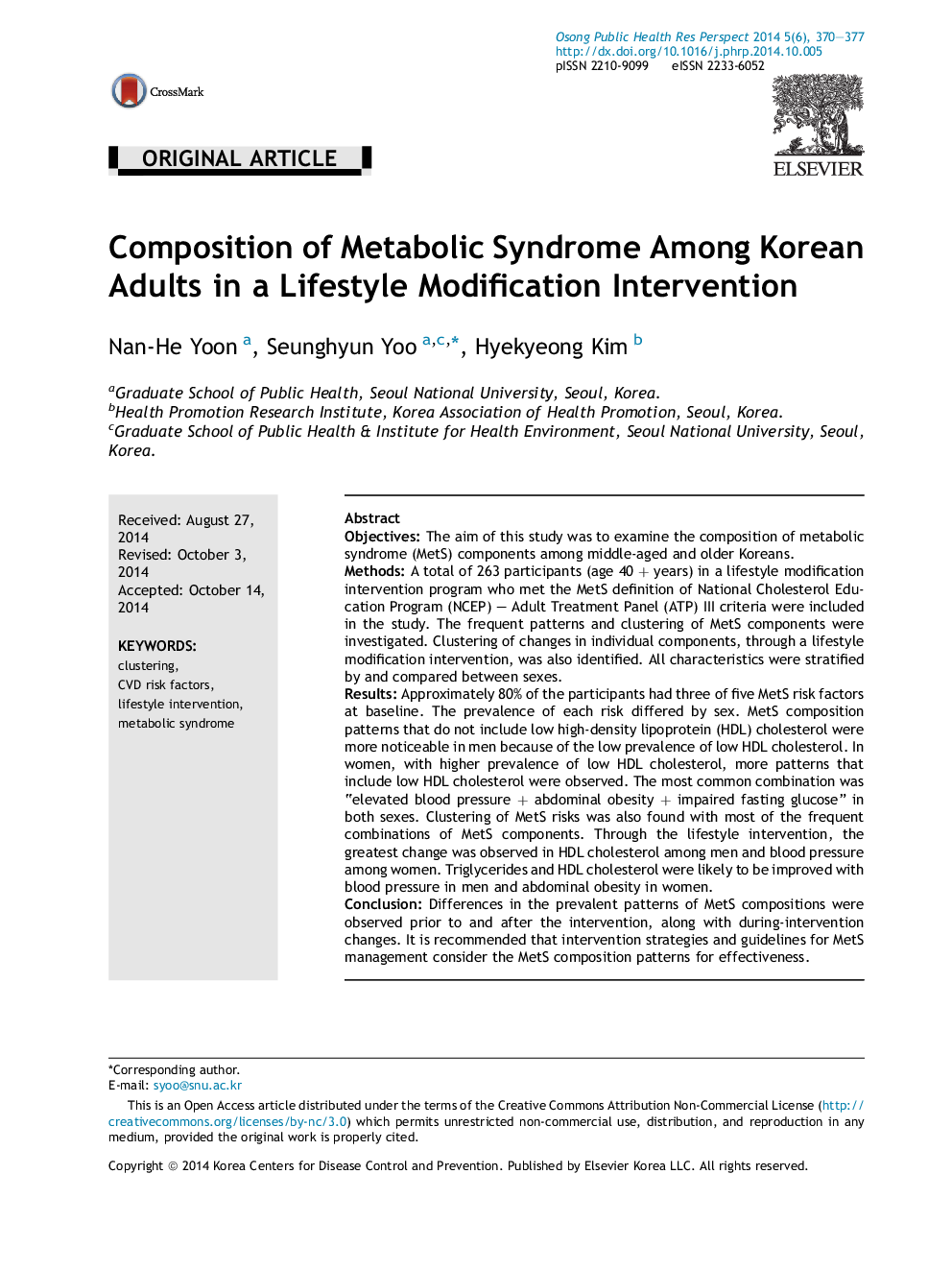| Article ID | Journal | Published Year | Pages | File Type |
|---|---|---|---|---|
| 4202020 | Osong Public Health and Research Perspectives | 2014 | 8 Pages |
ObjectivesThe aim of this study was to examine the composition of metabolic syndrome (MetS) components among middle-aged and older Koreans.MethodsA total of 263 participants (age 40 + years) in a lifestyle modification intervention program who met the MetS definition of National Cholesterol Education Program (NCEP) – Adult Treatment Panel (ATP) III criteria were included in the study. The frequent patterns and clustering of MetS components were investigated. Clustering of changes in individual components, through a lifestyle modification intervention, was also identified. All characteristics were stratified by and compared between sexes.ResultsApproximately 80% of the participants had three of five MetS risk factors at baseline. The prevalence of each risk differed by sex. MetS composition patterns that do not include low high-density lipoprotein (HDL) cholesterol were more noticeable in men because of the low prevalence of low HDL cholesterol. In women, with higher prevalence of low HDL cholesterol, more patterns that include low HDL cholesterol were observed. The most common combination was “elevated blood pressure + abdominal obesity + impaired fasting glucose” in both sexes. Clustering of MetS risks was also found with most of the frequent combinations of MetS components. Through the lifestyle intervention, the greatest change was observed in HDL cholesterol among men and blood pressure among women. Triglycerides and HDL cholesterol were likely to be improved with blood pressure in men and abdominal obesity in women.ConclusionDifferences in the prevalent patterns of MetS compositions were observed prior to and after the intervention, along with during-intervention changes. It is recommended that intervention strategies and guidelines for MetS management consider the MetS composition patterns for effectiveness.
